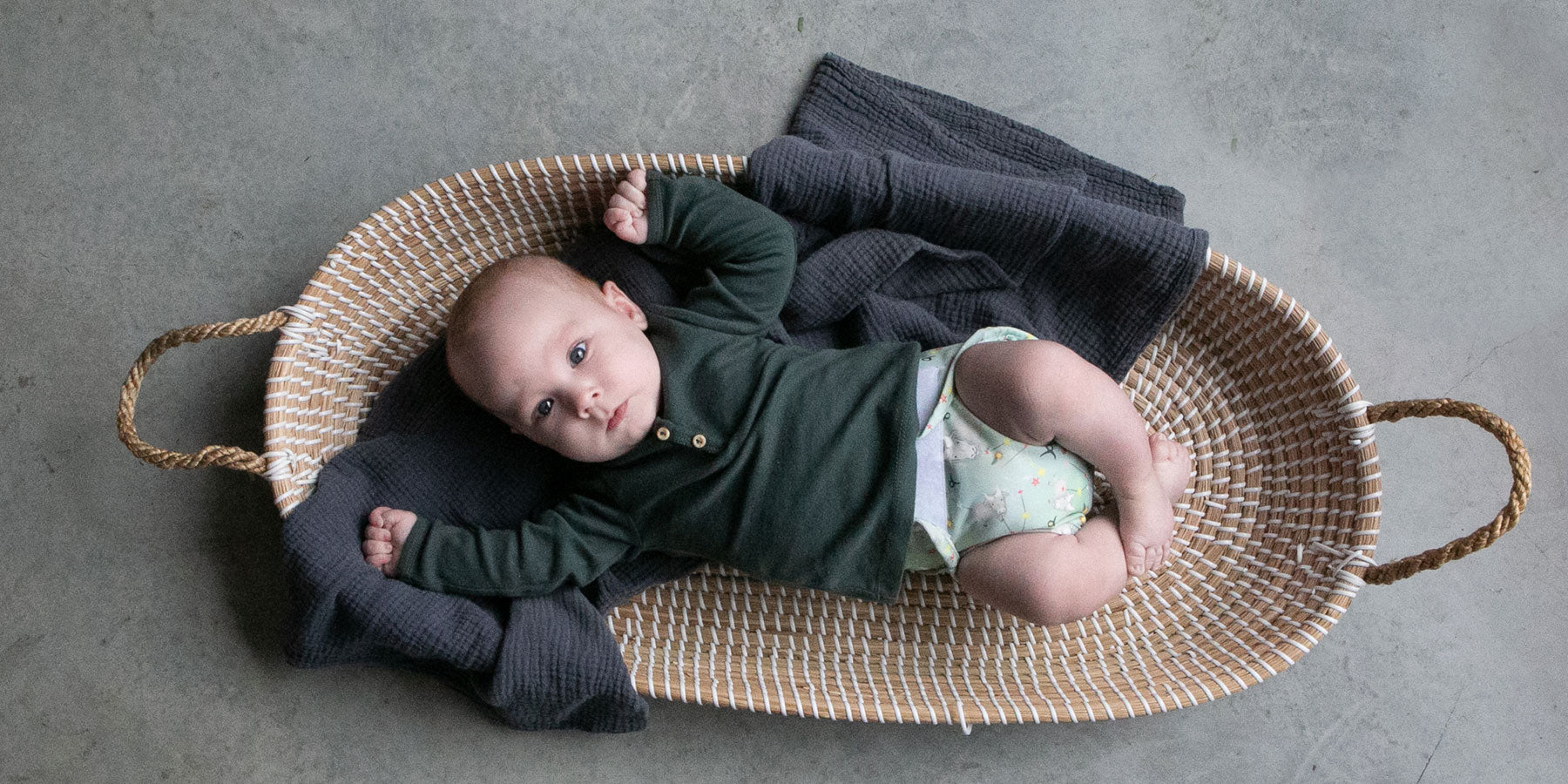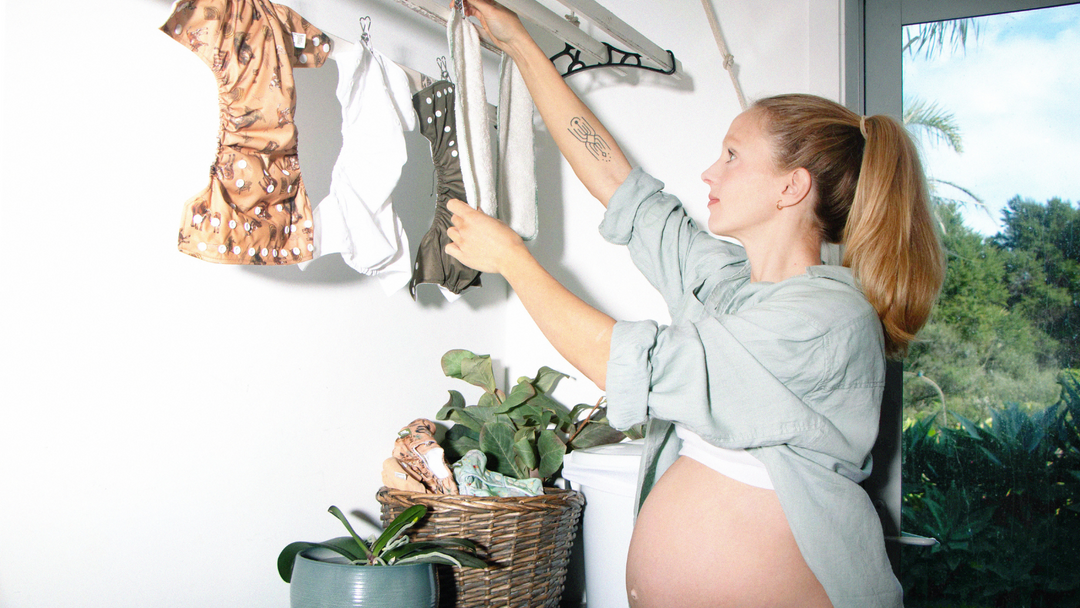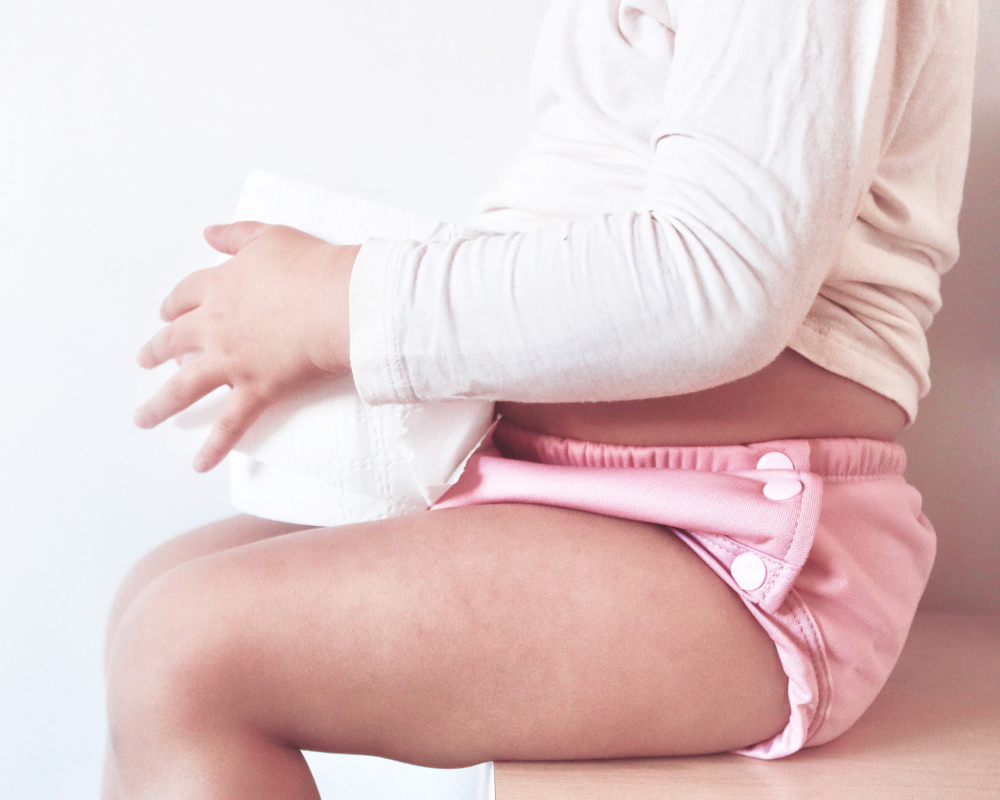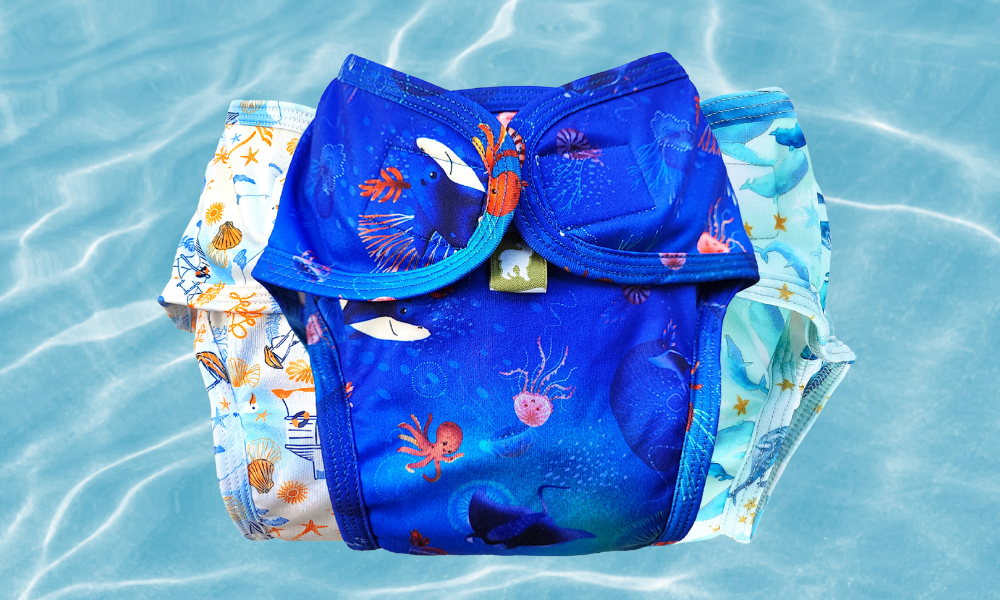Night-time nappies: How to use reusable nappies at night
Many people use reusable nappies at nighttime because they are generally more absorbent than regular disposable nappies.
Our foolproof nighttime solution is a fitted nappy (choose bamboo or cotton), a combination of bamboo and hemp boosters and a nappy wrap. This combo was recently voted 'Best Nighttime Nappy' by Womans Health Mag.

Should you try a reusable nappy nighttime starter kit?
If you want to try reusable nappies overnight, a great place to start is with a pre-made nighttime nappy kit like this one. In this kit, we've added five fitted nappies in the fabric of your choice (bamboo or cotton), three waterproof wraps and a pack of liners.
Optional extras: you could consider adding some nappy booster pads if you have a super heavy wetter or a baby who wees a lot. One of the best things about reusable nappies is they are customisable - you can add boosters and inserts to the nappy as the baby grows and requires more absorbency.
Did you know LittleLamb bamboo nappies have been independently certified to hold over 700ml of liquid?
700ml is much more than disposable nappies, which typically absorb around 400ml of liquid. The equation is easy - the more liquid a nappy can hold, the longer baby will stay dry and (hopefully) stay asleep. And fewer leaks! Using reusable nappies can help you say goodbye to nightly wee-soaked bedsheet changes.
All our reusable bamboo and cotton nappies come with a reusable nappy liner: this is a piece of clever recycled polyester that keeps baby's skin dry by sucking the moisture through the liner - thus keeping baby dry.
Are nighttime nappies different to daytime nappies?
Yes and no. We know the types of reusable nappies on the market can be confusing. So, what we recommend for nighttime are fitted (sometimes called shaped) two-part nappies - these are more absorbent than pocket nappies.
Many parents love how absorbent and reliable our fitted nappies and wrap combo is, so choose to use them full time, so in the day as well as overnight (by adjusting the absorbency with boosters for overnight).
Pros:
- Extremely absorbent
- Absorbency is easily customisable by adding booster pads and inserts
Cons:
- Two parts, so it can be a little bit confusing to new users (each fitted nappy requires a waterproofing wrap)
- Slower drying time: fitted nappies are very absorbent, but with this comes a much slower drying time. We recommend our cotton nappy and wrap combo if you need a nappy that dries quicker.
Watch this video on our fitted nappies and wraps to learn how to use them!
What nighttime nappies are best?
You may wonder, 'which cloth nappies should I use for nighttime?'. Our reusable bamboo nappies are the most absorbent, so we consider them the best nighttime nappies because they will guarantee the most amount of dryness for the baby. If you are worried about their slow drying time, we recommend purchasing a few more than you think you'll need - this will reduce the washing pressure.
Our retail partners highly recommend our fitted nappies (cotton and bamboo). The two-part style of reusable nappy is our original nappy - the one our founder Esme designed for her children.
Learn more about our founders and company values here.
Can you use pocket nappies for nighttime?
Some people use pocket nappies for nighttime, and we have heard this can be successful, but we know our fitted nappies will last longer, resulting in a dry night's sleep.
If you decide to use pocket nappies at night, it is critical to ensure you have sufficient boosting! We designed our hemp and cotton booster for use with our pocket nappies - the ergonomic shape is excellent for catching all the liquid from the nappy.
When to start potty training at night?
According to NCT UK, the best time to start potty training at night is once your child has mastered potty training during the day. Each child is different, but it's normal to learn to stay dry at night a little while after daytime potty training.
To be able to potty train at night, your child needs to be physically ready, and they need to want to learn. A good indicator that the baby is ready to start potty training at night is if your child's nappy is dry or only slightly damp for a few mornings.
When to stop using nappies at night time?
Children can control their bladder and bowels when they're physically ready and want to be dry and clean. Using cloth nappies can help accelerate their desire to stop using nappies as reusable nappies are wetter, and it is more evident to toddlers when they have made themselves wet. However, every child is different, so it's best not to compare your child with others.
Most children can control their bowels (the urge to poo) before they can control their bladder (wees). Most babies will not release their bowels overnight; pooing is generally only performed when the child is awake.
According to the NHS:
By age 1, most babies have stopped doing poos at night.
By age 2, some children will be dry during the day, but this is still relatively early.
By age 3, 9 out of 10 children are dry most days – even then, all children have the odd accident, especially when they're excited, upset or absorbed in something else.
By age 4, most children are reliably dry during the day.
Children usually take a little longer to learn to stay dry throughout the night. Although most learn nighttime dryness between 3 and 5, up to 1 in 5 children aged five sometimes wet the bed.
Which nappies are best for nighttime? Disposable vs reusable nappies.
Not only are reusable nappies better for the environment, but they are also more absorbent, and they help you save money! Many parents and caregivers use reusable nappies because they are more reliable than disposables. They also have fewer chemicals and are said to be softer on the baby's skin.
Reusable nappies are also cheaper than disposable nappies - while you have to invest more upfront, once you have a set of reusable nappies, those are all you'll ever have to buy. So reusable nappies are a higher upfront investment, but when used long-term, they'll save you hundreds of pounds. And, if you have a subsequent baby, their nappies will be essentially free (unless you become obsessed with purchasing nappy prints!)
How many times should you change your baby at night?
As a general rule of thumb, nighttime nappy changes are only necessary if your baby has soiled (pooed) the nappy or if it is full. And as the baby gets older and undisturbed sleep is more attainable, you can leave the nighttime nappy on for the duration of the child's sleep. We recommend using a fleecy liner to keep the baby's skin dry.
How to boost nighttime cloth nappies? Can you add extra pads to nighttime reusable nappies?
Adding boosters to nighttime reusable nappies increases the nappy's absorbency, making the nappy last longer.
There are a few ways you can boost for a nighttime nappy:
- Place the boosters inside the fitted nappy, then add liners on top. You'll usually be able to add two boosters this way.
- For boys, you can fold the booster and place it at the front of the nappy, which is more targeted to the wet area.
- You can place a booster between the nappy and the wrap if you need more boosting.
- You may want to ensure you are using the correct type of booster. We recommend steering away from microfibre boosters and instead using a combination of bamboo, hemp and cotton.
Typically, the boosters' hierarchy (from least to most absorption capacity) is microfibre, charcoal, cotton, bamboo, and hemp. Microfibre boosters are also prone to compression leaks - when put under pressure, the liquid they've absorbed will leak out.
How many cloth nappies will I need for nighttime?
We think five reusable nappies will be enough for nighttime use, so this is how many we've included in our ready to use night time starter kit. Five nappies are enough if you wash every 2.5 days; two in the wash, one in use and two back-ups. The more night nappies you have on hand, the less stressed you would be to get the washing done on time.
You only need 1 wrap for every 2 nappies.
Why does my baby's nighttime nappy leak?
Sometimes a night nappy will start to leak. We've compiled a list of the most likely reasons a reusable nappy will leak at nighttime:
Check Liners and Boosters
Our fleece liner and boosters are easily confused; the fleece liner is a single soft and fluffy layer of fabric with no absorbency value. The booster is a double layer of the same fabric as the nappy - the booster's job is additional absorbency. If using disposable liners, ensure that you cut them in half if they are too big as folding does not allow the liquid to pass through quickly enough and may allow leaks, or tuck them around the booster.
Use either the fleece liner or the disposable liners, never both, as again, it may not allow liquid through fast enough to be absorbed.
The leaks may be an absorbency issue; if the nappy has been fine initially, more boosting may be needed – what goes in must come out! Two (or more) boosters can be used in each nappy; both do not have to go inside the nappy itself; you can place one between the nappy and wrap. Bamboo or hemp boosters are good to use as both are highly absorbent fabrics.
For a tummy sleeper or boy, fold one of the boosters in half and put it at the front of the nappy where the absorbency is needed.
Is the baby's vest/clothing too tight?
We are guilty of letting the vest get too snug as babies grow so quickly, but the pressure from an over-tight vest can cause a leak; you can get vest extenders for use with real nappies or ensure they do not get too snug. The same effect can happen with all overly tight clothing, leggings, tights, and baby grows, so ensure nothing is excessively tight and put excess pressure on the wet nappy.
Is the Sizing correct?
Leaks can also be a sizing issue and may indicate that it is time to move up a size. Babies come in all shapes and sizes, so our weight range is only a guide, those with gorgeous chunky squishy thighs or a tall baby running above the 90th on their height chart can outgrow a size before the maximum weight and leaks suddenly starting can indicate that bigger sizes are now required.
Is the wrap on correctly?
Ensure that all the nappy is inside the wrap, and any fabric showing will allow liquid to escape. Ensure the wrap sits in the 'knicker-line' and not on the baby's thigh.







